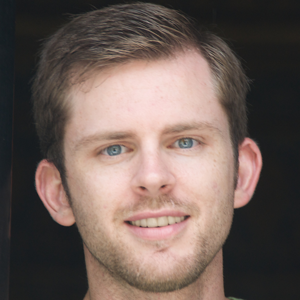This post features six people who earn a good living through their art. They’ve all unlocked the secrets of convergence—working on something they love that other people value enough to pay for.
How did they do it? The full version of each story, along with lots of details and a step-by-step plan, will be available in the upcoming product that launches next week. But here’s a quick preview…
Dave Radparvar (and others): HOLSTEE.COM
Dave Radparvar, his brother Mike, and good friend Fabian built Holstee.com, a creative illustration business with a mission to encourage mindful living.
You’ve seen the Holstee manifesto. Even if you think you haven’t, you have. It’s been shared more than 60 million times and has been translated into at least twelve languages. Have you ever wondered where they got the idea for this amazing successful illustration that hangs on walls all over the world?
Funny thing is, this company started out in 2008 with the dream to make t-shirts with fancy holster pockets (hols-tee… get it?). When the original business idea failed, they regrouped by writing down what they believed to be true despite their business failings. The result? A viral manifesto.
Holstee quickly learned an important lesson in creative entrepreneurship: start with what you know, build on it, and then adapt until it works. Sometimes you’ll need to step in the opposite direction, eliminate products that are no longer working, and create more by focusing on less.
A creative freedom lesson from Holstee: Adapt to succeed. Start with the idea you have now, but don’t be surprised if it leads you to something even greater.
——
Trending: Navy SEAL Secrets for High Performance Under Pressure
Rosa Park: CEREAL MAGAZINE
Rosa Park created U.K.-based Cereal Magazine, a global publication targeted at savvy travelers who love and enjoy great food. She built her business on a passion as a starting point—but knew it would take more to actually turn what she’d “loved” into her full-time work.
In July 2012 Rosa started work on her high-end artisan magazine to combine her lifelong obsession with food and travel with her skills in style and design. Early on she recognized that setting a schedule to ship and sticking with it would be key to her start up success. She gave her dream a deadline: she’d launch the first issue by the end of 2012 and focus her creative energy to make this goal a reality. The result: after one year in business, Cereal has readers in forty countries and sells over 20,000 copies of each issue.
A creative freedom lesson from Rosa: Passion + progress yields success. Set a deadline to turn what you love into something marketable and scalable.
—–
Lauren and Joel Gryniewski: OLD TOM FOOLERY
Lauren and Joel left their jobs as veterans in the advertising industry and dove head first into the big world of stationary to create a unique line of humorous and offbeat unisex greeting cards.
They loved quirky greeting cards, and it dawned on them that writing and designing cards was a lot like their full time work of designing ads (but a lot more fun). Dreaming of more, the creative duo decided to repurpose their skills. They picked up a $500 letterpress on Craigslist, printed their first run of fifty-two cards in their kitchen, and hit the New York stationery show. “You never feel like you’re ready but you just have to dive in,” Lauren explained. “There will inevitably be some things that go wrong along the way, so you have to be willing to roll with the punches, think on your feet, and make the best of it.”
A creative freedom lesson from Lauren and Joel: Light a fire under your ass (“quitting our full-time jobs was our version of this”). No one else is going to push you to get started (“and you won’t ever succeed unless you start”).
—–
Jeff Sheldon: UGMONK.COM
A less-than-inspiring work experience in a poor economy drove Jeff Sheldon to build an outlet for his creativity in the design-driven lifestyle and apparel brand of Ugmonk. Today Jeff creates minimalist, silkscreened typographical shirts and other simply designed (yet premium priced) awesome, artisan products.
Jeff’s side project of designing t-shirts (while working full-time) started with four simple styles and 200 shirts. Today Ugmonk’s products are sold online and in 60 countries, but this growth hasn’t happened by accident. From the first day and first design, Ugmonk has been intentional about its focus on creating awesome products and giving their customers great experiences. Jeff sweats over the details because he knows they add up to a unique quality product “I won’t design a product that I won’t personally wear or use,” Jeff says. “Even if there are hot trends that might be easy to jump on, I try to stay true to my personal tastes as a designer and create things that are more timeless.”
Trending: How to Make Menopause the Best Time of Your Life
A creative freedom lesson from Jeff: Like jobs, many products lack inspiration. Pay attention to the details and ignore the trends.
—–

ANNE HOLMAN JEWELRY DESIGN
Anne Holman had been crafting vintage inspired sterling silver jewelry for more than a decade before she took the leap into building her business online.
Anne, a single mom, dreamed of working for herself to be more available to her son, yet she wasn’t sure she had the business savvy of a successful entrepreneur. While crafting artisan jewelry on on the side, Anne worked a day job in the custom art department of a fashion textile company. What she didn’t realize was that the essential business skills that she was learning every day at work were the exact skills and experiences she would need to create her own thriving brand. When Anne made the leap, she learned she already had the net—she knew what do. It wasn’t a matter of learning the skills; it was taking the step to use them.
A creative freedom lesson from Anne: Pay attention to what you’ve learned through traditional employment and other work. You may already have the business skills you need. (See also: skill transformation.)
—–
Trending: Microsoft, Google, and Beyond: What Business at the Cutting-Edge of AI Looks Like
Wendy Downs: MOOPSHOP.COM
Wendy Downs built a hand-crafted artisan bag business and found success by recognizing when it was time to grow beyond herself.
She couldn’t find a well-designed bag that fit her needs, so she did what artists do—she made one herself. When people saw what the bag she made and offered to buy it, she again did what many artists do to make money on the side—she sold them on Etsy—handcrafting every one by herself and working day and night to keep up with an ever-increasing stream of orders. When she started selling more bags than she could possibly make, she recognized she needed help—but staying true to her hand crafted design was critical. Since 2007, Moop has grown to include a team of four production assistants that cut, sew, and finish each bag by hand in her local Pennsylvania workshop.
A final creative freedom lesson from Wendy: Know when to grow. You can scale without selling out as an artist.
—–
I’m incredibly grateful to all these amazing people for sharing their lessons, our goal is to encourage other people to pursue creative freedom and create more success stories like these!
A version of this post originally appeared on Chris Guilldebeau’s website.




































